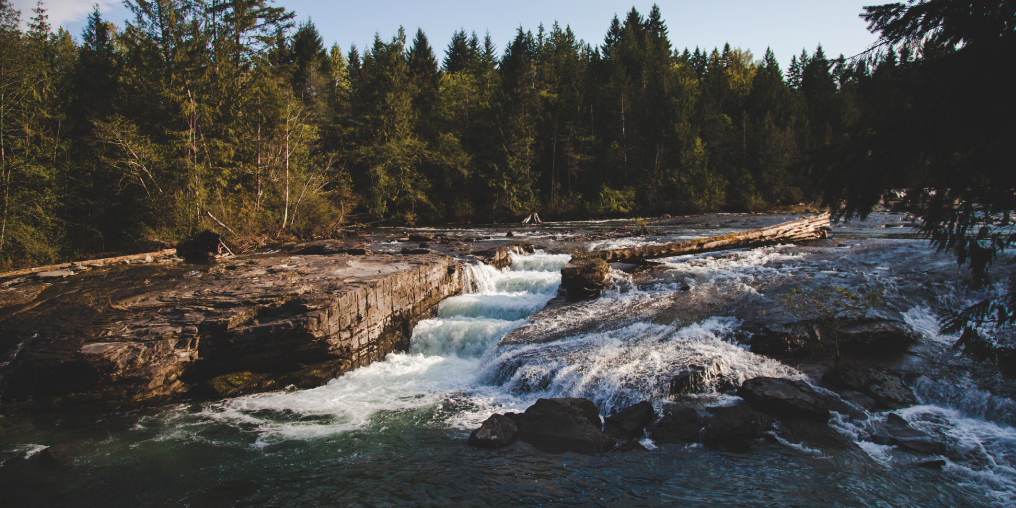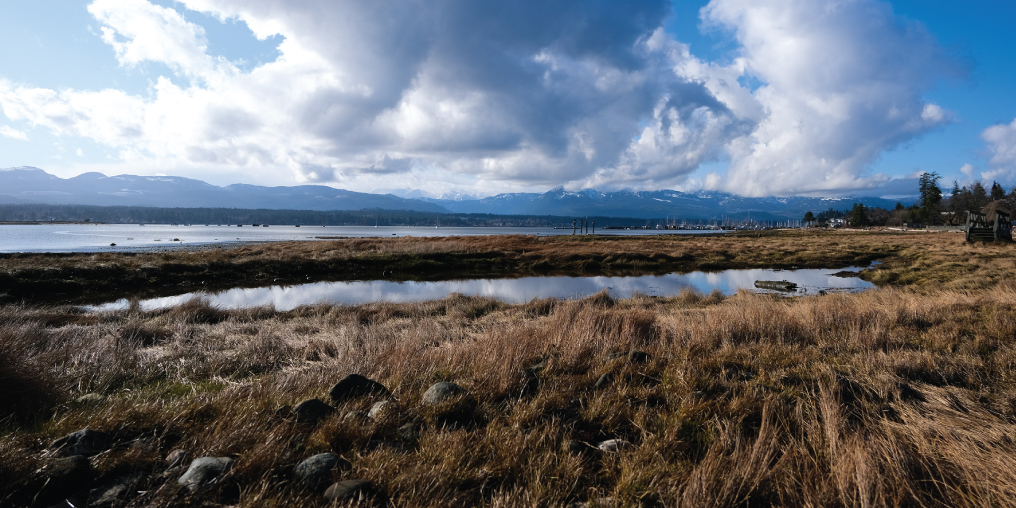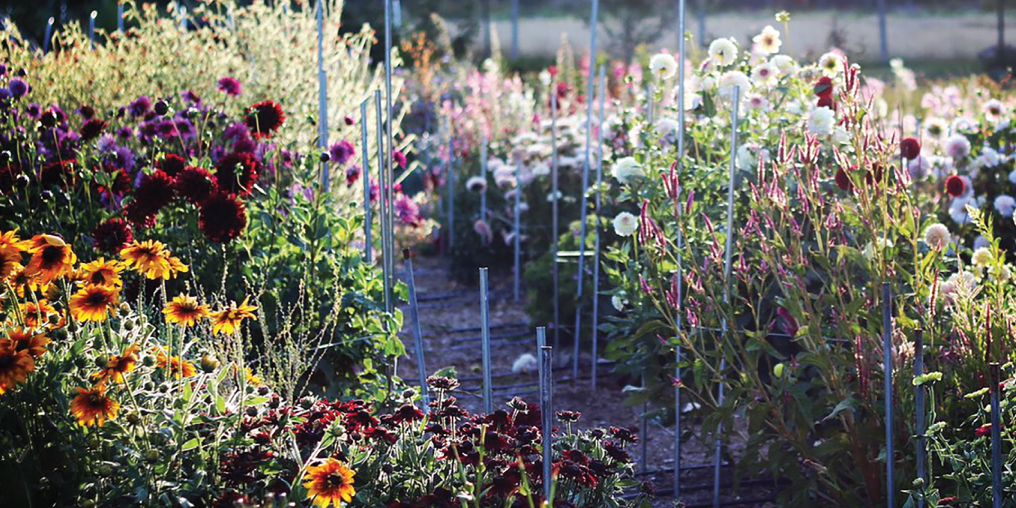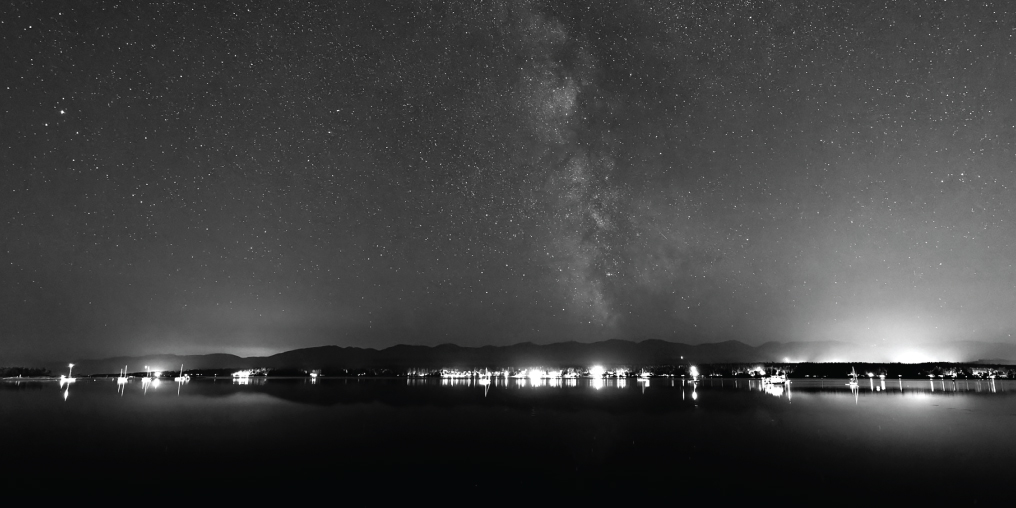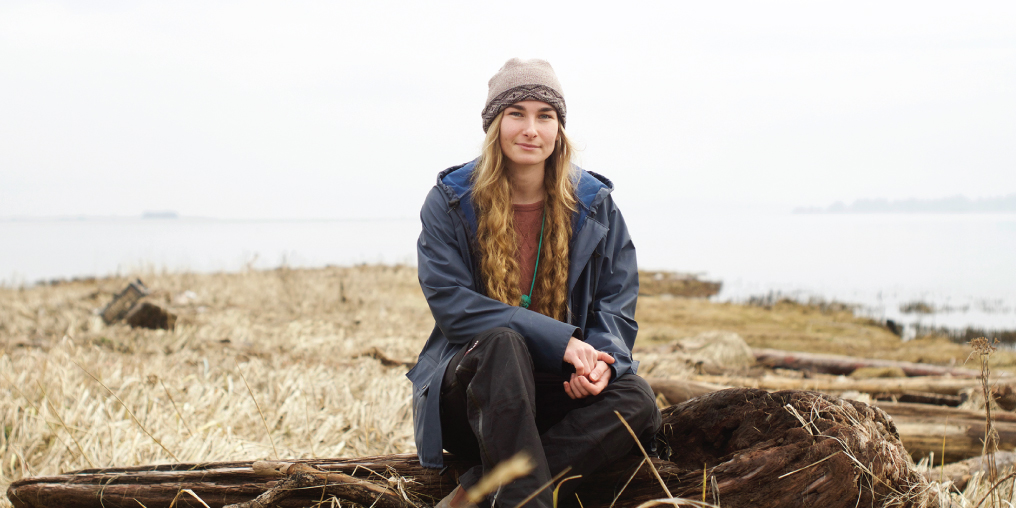A light rain is trying to fall, but it’s more of a mist in the air that clings to eyelashes and hangs, tremulous on cedar branch tips before falling to the saturated earth. Everything is heavy and full. Buds are poised like water drops, just on the edge of bursting into flower. Spring teeters on its riotous edge, and the forest almost seems to hum.
Choosing a path to Nymph Falls is made easy by signs that indicate distance, difficulty, and proper use. Most are pedestrian friendly, while others are strictly for bikes. If you happened to bring your horse along, there are marked trails for them as well.
I set off down a multi-use trail and decide to wind my way through the trees first, and then finish my walk at the falls. The forest is made up of Douglas Fir, Western Red Cedar, Western Hemlock, Big Leaf Maple, Alder, and Cottonwood. The understory is soft, old giants decaying into soil again, providing rich ground for downy ferns as they unfurl into the longer, warmer days. My plant-nerd heart is happy here in this community of leaves, and I watch for anemone and orchid at the edges of the trail.
The 55 hectares that make up Nymph Falls Park were originally designated as UREP (use, recreation, and enjoyment of the public) and in 1992 the Comox Valley Regional District received a 20-year lease for park purposes. In 2012, this lease was extended for an additional 30 years. Downstream from the Comox Lake dam, the Puntledge River tumbles over a series of rocky ledges, to collect in a deep pool. In the 1950s, the Department of Fisheries and Oceans partnered with BC Hydro and blasted a series of fish ladders into the bedrock of the falls to make the journey for returning salmon a little less arduous. Arrive in autumn to see the ladders in use.
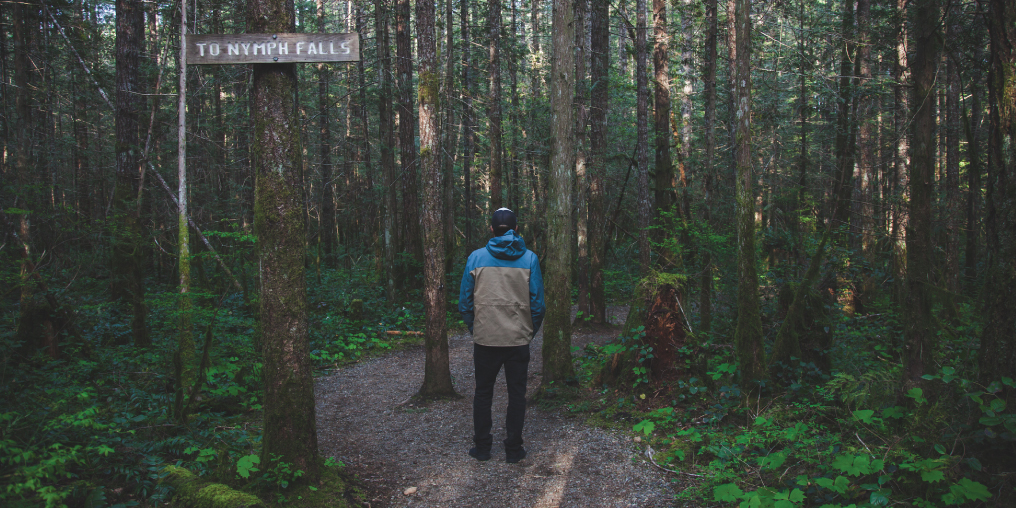
As I near the falls, the roar of the river makes its way through the trees and my pulse quickens in response. Making my way onto a rocky outcrop I close my eyes to the spray and my hair blows around my face.
Our bodies are largely made up of water, so it makes sense that we tend to seek it out when in need of solace or stress relief. Upon consultation of the great Google oracle, I learned that waterfalls and waves both create negative ions which are said to enhance mood, improve resistance to disease, stimulate our senses, make our bodies better able to absorb oxygen into the blood cells, and helps to increase serotonin levels.
Seasons dictate the Nymph Falls’ welcome: the quiet greeting of a lush carpet of vanilla leaf in spring; the cries of summer revelLers; the determination of returning salmon in autumn; or the deep, wet pause of winter. All are beautiful in different ways, and each offers its own reward.
To find Nymph Falls, travel toward Highway 19 (Inland Island Highway) on the Piercy Road connector. Turn left onto Forbidden Plateau Road just before you reach the highway, and follow signs directing you. The parking lot is on the left side of the road.

